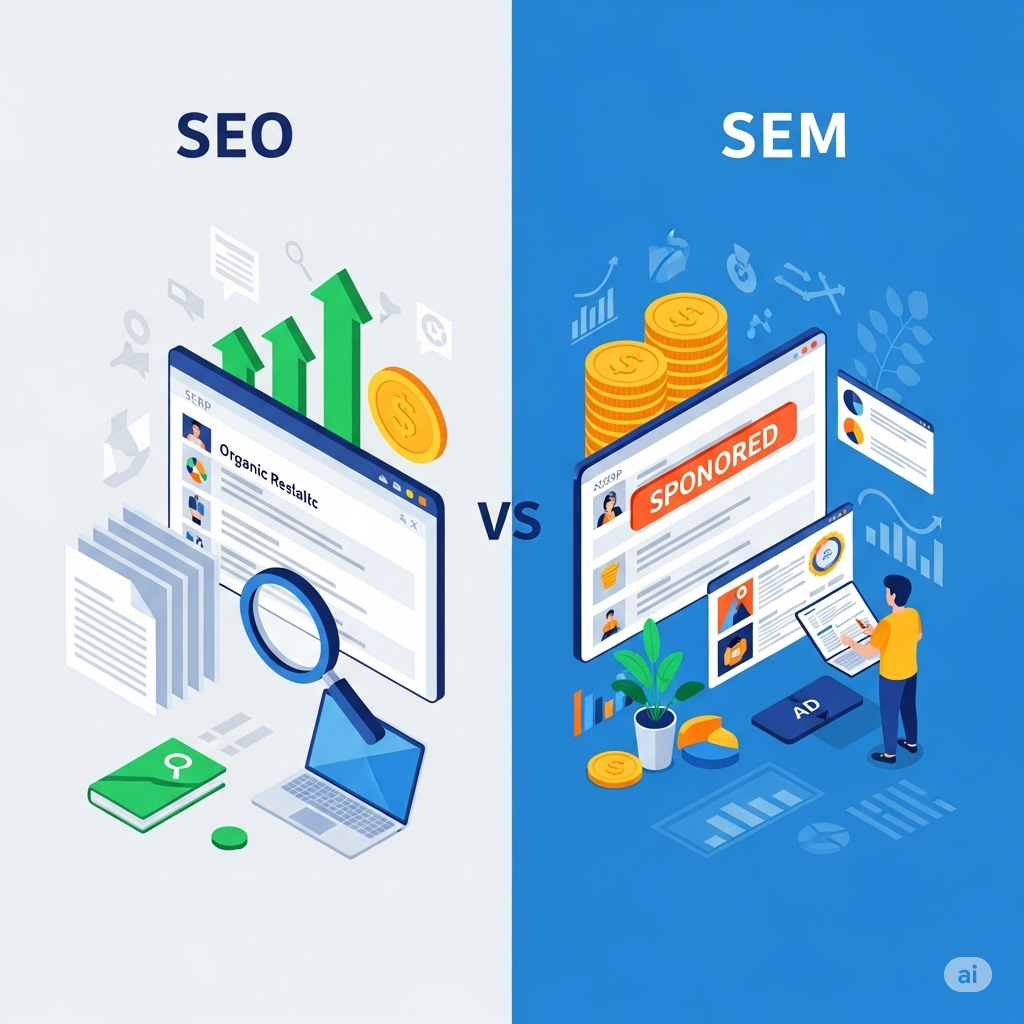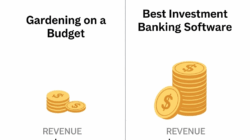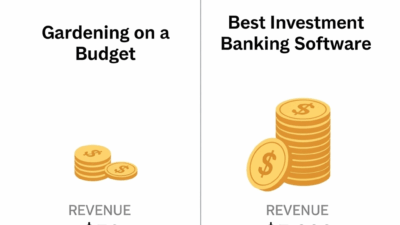In today’s digital economy, showing where your audience looks is everything. Whether you’re a blogger, small business owner, or enterprise marketer, the ability to drive traffic through search engines can make or break your online success. That’s where two powerful strategies come into play—Search Engine Optimization (SEO) and Search Engine Marketing (SEM). While both aim to boost visibility on search engines like Google or Bing, they operate differently. Choosing between or using them together requires a deeper understanding of what each does and how it fits into your goals.
In this article, we’ll walk you through what SEO and SEM are, how they differ, and when to use each. You’ll see their benefits, challenges, tools, and how they contribute to long-term online growth. If you’re stuck wondering whether to invest time in ranking organically or buy your way to the top with ads, this guide will help you decide. So, let’s cut through the jargon and get to the point—here’s everything you need to know about SEO vs SEM.
What Is SEO?
Let’s start with the basics. SEO, or Search Engine Optimization, refers to improving your website to increase its visibility in organic (non-paid) search engine results.
Search engines like Google use algorithms to determine the most relevant pages for a user’s query. SEO helps your site align with those algorithmic preferences so you appear higher in results. It involves on-page tactics (like keyword usage, content quality, and meta tags) and off-page strategies (such as backlinks from other sites).
Why is SEO so valuable? Because it drives organic traffic—visitors who find your site naturally rather than through paid ads. These users tend to be more engaged and trust organic results more than sponsored ones.
The downside? SEO takes time. It’s not a quick fix but rather a long-term investment. Climbing the rankings can take weeks or months, especially in competitive industries.
Benefits of SEO
SEO shines brightest in these key areas:
- Cost-Effective Long-Term Growth: Once your content ranks, it can attract traffic for months or even years without added cost.
- Higher Trust Factor: Users tend to skip ads and trust organic results more.
- Stronger Content Foundation: SEO forces you to create helpful, valuable content that satisfies search intent, which is the reason behind a user’s search query. Understanding and satisfying search intent is crucial for SEO success. Compounds Over Time: The more quality content and backlinks you build, the easier it gets to rank in the future.
SEO is a no-brainer if you’re patient and committed to a sustainable stream of visitors without constantly spending money. It will make you feel more patient and committed to your digital marketing strategy.
What Is SEM?
Now, let’s break down SEM. Search Engine Marketing is a broader digital marketing strategy that includes organic efforts (like SEO) and paid search tactics.
However, in everyday usage, SEM usually refers to paid search ads, particularly pay-per-click (PPC) advertising. The most common platform for SEM is Google Ads, where businesses bid on keywords to show ads at the top of search results.
SEM gives you instant visibility. If you bid on the right keywords and set up a compelling ad, your website can be the first thing people see when they search—even if your SEO is weak or nonexistent.
The trade-off? SEM costs money and can get expensive fast, depending on your industry. You must also continually monitor and optimize your campaigns to avoid wasting your ad budget.
Benefits of SEM
SEM isn’t just about “pay and pray.” Done right, it can be one of the fastest and most targeted ways to get results:
- Instant Visibility: New site? Product launch? With SEM, you can appear at the top of search results within hours.
- Precision Targeting: Choose who sees your ads based on location, device, demographics, and more.
- Scalable Budgeting: Start small and ramp up based on performance.
- Great for Testing: Not sure what your audience wants? Test multiple ads and landing pages to gather quick feedback.
SEM is perfect for businesses that need quick wins or have time-sensitive promotions.

What Differences Between SEO and SEM ?
Let’s be real: SEO and SEM are not the same. Understanding their core differences will empower you to use them effectively and increase your confidence in your digital marketing decisions.
- Cost
- SEO is “free” in terms of ad spend but requires time, expertise, or the help of professionals.
- SEM requires ongoing investment for every click or impression.
- Speed
- SEO is slow and gradual—perfect for long-term growth.
- SEM is immediate and ideal for promotions, product launches, or testing.
- Sustainability
- SEO builds momentum over time; once you rank, you can stay there with ongoing effort.
- SEM disappears as soon as you stop paying.
- Click-Through Rate (CTR)
- Organic results often get more clicks than paid ones, especially in informational searches.
- Paid ads dominate for high-intent commercial queries.
- Trust and Credibility
- Users trust organic listings more, assuming they’ve earned their place.
- Ads can seem salesy or intrusive if not done right.
Understanding these contrasts can help you build an effective and efficient strategy, whether you choose one or blend both.
When Should You Use SEO?
SEO is the go-to approach when you’re building long-term value. Here are a few scenarios where SEO is your best friend:
- You want to reduce paid ad spending over time.
- You have time to wait and nurture organic rankings.
- You’re creating a content-heavy platform like a blog or knowledge hub.
- You want to build brand authority through valuable, evergreen content.
SEO isn’t flashy or fast but is highly effective for sustained digital growth.
When Should You Use SEM?
On the flip side, SEM is ideal when:
- You need traffic or leads immediately.
- You’re launching a new product or service.
- Your website is new and not ranking yet.
- You want to target specific offers or seasonal campaigns.
SEM offers speed and control, making it great for businesses that want fast traction.

Why Smart Brands Use Both
Here’s the secret sauce: you don’t have to choose one or the other.
Many brands use SEO and SEM together to maximize results. This strategic approach allows them to use SEM for quick wins and testing and then use the data to inform their SEO strategy, making them more forward-thinking in their digital marketing efforts.
This integrated strategy balances short-term gains with long-term sustainability.
Tools to Help With SEO and SEM
Whether DIY-ing or working with a team, having the right tools makes a huge difference. Here are some popular ones:
- For SEO:
- Google Search Console: Track search performance and fix technical SEO issues.
- Ahrefs or SEMrush: Comprehensive tools for keyword research, backlink analysis, and site audits.
- Yoast SEO: A plugin that helps you optimize content on WordPress sites.
- For SEM:
- Google Ads: The backbone of most SEM campaigns, with robust targeting features.
- Keyword Planner: Helps you find keywords to bid on, with data on search volume and cost.
- Unbounce or Instapage: Tools for creating high-converting landing pages for ads.
Each tool has its strengths; many offer free versions or trials to get started.
Common SEO and SEM Mistakes to Avoid
Even experienced marketers can slip up. Here are a few traps to avoid:
- Ignoring User Intent: Whether it’s SEO or SEM if your content or ad doesn’t match what users are looking for, it won’t work.
- Keyword Stuffing: Overloading pages with keywords can hurt your rankings and make content unreadable.
- Not Tracking Results: If you’re not measuring performance, you’re marketing blind.
- Chasing Vanity Metrics: High traffic is excellent, but conversions are better. Focus on actions that matter.
Learning from these common errors can help you craft more effective campaigns.
The Verdict on SEO vs SEM
So, who wins the battle between SEO and SEM? Honestly—there’s no clear winner. It all comes down to your goals, budget, and timeline.
Need traffic right now? Go SEM.
Want to build a foundation for the future? Focus on SEO.
Smart brands? They use both in harmony.
The important thing is to align your strategy with your audience’s needs and your own capacity. Whether you’re building authority over time or capturing leads quickly, SEO and SEM should be part of your digital toolkit.
Conclusion
At the end of the day, SEO vs SEM isn’t a rivalry—it’s a relationship. Each has its strengths, and together, they can build a powerhouse digital marketing strategy that drives consistent, high-quality traffic to your website.
If you want to grow your business online, understand that SEO and SEM are tools. The real magic comes when you use them with purpose, insight, and a clear goal. With the right balance, you can make your brand visible today and stay relevant tomorrow.







